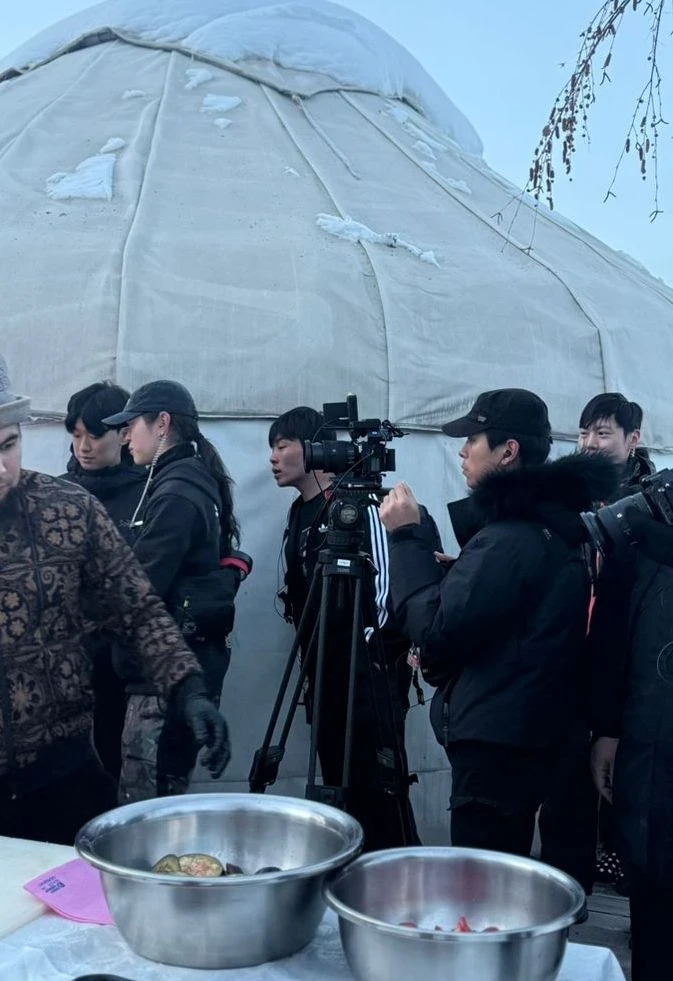This spin-off of the Netflix series Physical: Asia is analyzed in detail by the author here.
This South Korean reality show from Netflix showcases a competition among eight countries in Asia.
In the first season of the show Physical: Asia, the results were summarized and winners were announced. This international spin-off of the famous South Korean fitness reality show Netflix, Physical: 100, started on October 28. Eight countries competed in various challenges testing their strength, endurance, strategy, and willpower.
What is Physical: Asia?
Like in Physical: 100, the participants of the competition are both men and women, but in this show, countries compete against each other based on their sports history and unique characteristics. The project featured 48 athletes — six from South Korea, Japan, Thailand, Mongolia, Turkey, Indonesia, Australia, and the Philippines. Among the famous participants were boxer Manny Pacquiao, the only eight-time world champion, and UFC middleweight champion Robert "The Reaper" Whittaker from Australia.
Fans of the show Physical: 100 might recognize some members of the South Korean team, such as the winner of the second season Amotti, UFC star Don Hyun "Ston Gun" Kim, and Olympic gold medalist wrestler Chang Eun Sil with Yun Seon Bin.
What was at stake?
In addition to sporting pride, the winning team received a cash prize of 1 billion Korean won (about $700,000), significantly exceeding the amount of 300 million Korean won that was awarded in the first and second seasons of Physical: 100.
What challenges were there?
“We created a venue the size of five football fields, using 1,200 tons of sand and 40 tons of steel,” shared producer Chang Ho Gi. “Our task was to combine various cultural and historical aspects of Korea and Asia.”
The first challenge, "Territorial Conquest," was a competition among all eight teams for four platforms located on top of a sand dune. Teams had to gather as many participants as possible on one platform, battling each other among the sand dunes.
The number of available platforms gradually decreased — from four to two, and then to one, with teams having fewer participants on the platforms being eliminated from the game.
In the second challenge, "Rescue of the Sunken Ship," two teams competed to deliver cargo from a sunken vessel to a designated collection point within 20 minutes. The team that delivered the heaviest cargo became the winner. Four teams out of eight advanced to the next round, while the remaining four fought in a death match to stay in the game.
The death match, a slightly modified version of Physical: 100, required participants to take possession of a ball in the arena and place it in the opponent's penalty area. The competition consisted of five rounds, with the team size increasing from one to five participants by the final round. Two teams won, while two losing teams were eliminated.
In the third challenge, the stakes were raised as the six remaining teams were divided into two groups of three, and each country selected its representative to participate in four matches.
The first match required two participants from each team to run a distance and jump over obstacles as quickly as possible. In the second match, two participants had to hold two stone totems weighing 135 kg. The team that held the totems the longest earned the most points.
In the third round, participants competed in hanging, where they had to hold on to a rope for as long as possible. In the final duel, participants tried to throw a 14 kg bag over a four-meter wall to the opponent's side, with the weight of the bag increasing throughout the competition.
Each match was assigned different points, and the two teams with the lowest scores were eliminated, not advancing to the "death match."
The fourth challenge, "Rope Battle Replay," required three participants from each team to whip a long heavy rope up and down, striking a device at the end. Each participant had one minute to register the maximum number of strikes, which counted only when force was necessary. The country with the highest score over two rounds advanced to the fifth stage, while the other three teams fought for survival in another "death match."
In this "death match," called "Pushing a 1200 kg Pole," three participants from each team were chained to a heavy pole in a circular arena and had to push it through 100 rounds. The team with the fewest rounds at the end of the time was eliminated, leaving only three teams for the fifth stage.
Before the fifth stage, the three remaining teams participated in a preliminary competition where two participants had to run on a treadmill. The team that covered the most distance became the winner and earned the opportunity to see the map for the next challenge.
In the fifth challenge, "Castle Conquest," teams had to deliver a cart with cargo to a castle with a drawbridge at the gates. Once the bridge was lowered, they had to fill the gaps in the bridge with heavy wooden beams so the cart could pass. The team that took the longest time to deliver the cart to the finish was eliminated.
The sixth and final challenge was a team match of six on six, testing the endurance and teamwork of the participants. The game was divided into three rounds. The first round involved pushing three wooden blocks weighing 100, 200, and 300 kg into the opponent's zone. The team that pushed the most blocks into the opponent's zone won.
The losing team in the first round could choose the second game — tug-of-war with an iron ball, in which six participants had to pull a ball tied to them to the finish. The game consisted of five rounds, with the weight of the ball increasing in each round. The team that won more rounds became the winner.
What were the results of Physical: Asia?
In the first challenge, the Turkish team won, demonstrating strategic ingenuity in "Territorial Conquest," which tested physical strength and endurance.
After this victory, Turkey chose opponents for the next challenge — "Rescue of the Sunken Ship," in which they managed to defeat Indonesia. In other matches organized by Turkey, Australia defeated Japan, Mongolia beat the Philippines, and South Korea triumphed over Thailand.
In the elimination match "Death Match," the teams with the lowest scores among the losers — Japan, the Philippines, Thailand, and Indonesia — had the opportunity to choose opponents. The Philippines chose Thailand, while Japan chose Indonesia.
The Philippines and Thailand became the first opponents, where the Philippines won and eliminated Thailand from the competition, winning three rounds.
In the next round, the clash between Japan and Indonesia turned into a tense struggle when judoka Soichi Hashimoto accidentally injured Indonesian swimmer Glenn Victor Sutanto. Hashimoto won the first round for Japan, after which the team continued to dominate in the "Death Match," eliminating Indonesia.
At the end of the fifth episode, Pacquiao announced his departure from the show, citing other commitments back home. "I would like to apologize to everyone; I will have to leave the competition," he said. "I came with the goal of showcasing the abilities of the Philippine team."
His place was taken by CrossFit athlete Justin Hernandez.
In the third challenge, Team Rep Match, South Korea, Australia, and the Philippines found themselves in Group A, while Mongolia, Turkey, and Japan formed Group B.
Australia confidently won all three of its first matches in Group A, leaving South Korea and the Philippines needing to battle for survival in a bag-throwing match. The winner of the second season of Physical: 100, Amotti, convincingly defeated Hernandez, eliminating the Philippines from the competition.
In Group B, Japan won the first obstacle match, while Mongolia led by winning the totem capture and hanging match. In the final bag-throwing match, Japan defeated Turkey, thanks to an outstanding performance by baseball player Yoshio Itoi.
In the eighth episode, participants were asked whom they feared facing in a one-on-one duel, and most chose Eddie Williams, the strongest man in Australia, weighing 113 kg and standing 1.9 meters tall.
Japan won the fourth challenge, Battle Rope Replay, securing a spot in the fifth challenge. Australia, Mongolia, and South Korea then faced off in a tough challenge — pushing a 1200 kg pole in the "Death Match," but teams could not send participants who had previously participated in Battle Rope Replay, which caused dissatisfaction among the Australians.
Australia performed the worst and was eliminated from the competition.
Before the fifth challenge, the three remaining teams competed in a preliminary competition, where South Korea emerged victorious and earned the opportunity to look at the map for the next challenge.
After the fifth challenge, Castle Conquest, Japan was eliminated from the show as the team scored the lowest points, leaving only Mongolia and South Korea in the final.
South Korea won the final challenge, winning two out of three games and becoming the champion of the first season of Physical: Asia, while Mongolia took second place.
Tatar S.Maidar
source: MiddleAsianNews




























